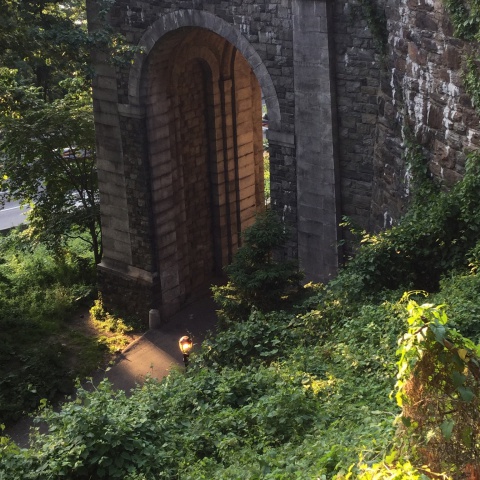Future City Lab: Natural vs. Man-made
Natural and Man-made Features of Our Community
Interdisciplinary

Time Estimate: 55 minutes
Objectives:
Students will:
- be able to define natural and man-made
- be able to explain the need for both natural and man-made features in a community such as New York City
- be able to identify examples of natural and man-made features of a community such as New York City
Materials:
- Presentation (provided)
- Natural vs. man-made features hink sheet
Standards:
- CCSS.ELA-LITERACY.SL.2.1: Participate in collaborative conversations with diverse partners about grade 2 topics and texts with peers and adults in small and large groups.
- CCSS.ELA-LITERACY.SL.2.2: Recount or describe key ideas or details from a text read aloud or information presented orally or through other media.
Guiding Questions:
- What does it mean to be natural? What does it mean to be man-made?
- What features of your community are natural or man-made? How do these features support your community?
- Hook (5 minutes)
- Building Background (5 minutes)
- Discussion - Identify Natural vs. Man-made Features (15 minutes)
- Collaborative Partner Work (25 minutes)
- Share (5 minutes)
Procedures
Present guiding questions: What does natural mean? What does man-made mean?
Display image of the Empire State Building and Hudson River. Which image shows something natural or man-made? What makes you say that?
Have students turn and talk about this question. Then have students share their responses with the whole class.
Preview and define vocabulary: natural and man-made
Natural: something that exists in nature that people use to meet their needs
Man-made: something that is created by humans and does not occur in nature
Using the presentation, display the image of the East River in New York City. Ask students: What features in this image are natural? What features in this image are man-made? As a class, list these features on the chart on the Natural vs. Man-made features Think Sheet under Column 1 (“Features”). Then identify if the features are natural or man-made under Column 2 (“Is the feature natural or man-made?”).
Suggested features: bridge, boat, river, buildings
Have students turn and talk about each of the features and identify how it might support the community. (I.e. The natural feature is a river. The river supports the community because it is a place where boats can transport things to and from the city.) Ask students to record their discussion on Column 3 (“How does this feature support the community?”).
Divide students into partnerships. Each partnership will first sketch their community on Page 2 of the Natural vs. Man-made Think Sheet (Note: if necessary, provide images of your specific community that displays both natural and man-made features). Using their sketch, students will complete the chart by identifying the feature, whether it is natural or man-made, and how it supports the community.
As a group, students will collaboratively discuss these features and how they support the community. Some questions that can guide their discussion are:
1.) What features of your community are natural or man-made?
2.) How do these features support (help) your community?
3.) What if you did not have these features?
Give each group the opportunity to share one feature they identified in the community. Ask students to explain if the feature is natural or man-made and what makes them say that. Finally, have students explain how this feature can support or help your community.
Additional Resources
Fieldtrips: This content is inspired by the Future City Lab gallery in the Museum’s flagship exhibition, New York at Its Core. If possible, consider bringing your students on a fieldtrip! Visit http://mcny.org/education/field-trips to find out more.
Acknowledgements
This series of lesson plans for New York at Its Core was developed in conjunction with a focus group of New York City public school teachers: Joy Canning, Max Chomet, Vassili Frantzis, Jessica Lam, Patty Ng, and Patricia Schultz.
This project was made possible in part by the Institute of Museum and Library Services.
The views, findings, conclusions or recommendations expressed in these lessons do not necessarily represent those of the Institute of Museum and Library Services.

